Discover whether braids can promote hair growth. Learn about the hair growth cycle, the benefits and risks of braiding, and how it compares to otherhair growth techniques. Get expert insights, tips, and personal testimonials on achieving longer, healthier hair with braids.
When it comes to hair care and styling, braids have long been celebrated for their versatility, elegance, and protective qualities. But a question often arises: do braids promote hair growth?
This topic sparks much debate and curiosity among hair enthusiasts, especially those looking to maximize the health and length of their locks. In this comprehensive blog post, we'll delve into the science and practical aspects of braiding and its potential impact on hair growth.
Understanding Hair Growth
Hair growth is a complex biological process influenced by various factors including genetics, hormones, health, and environmental conditions. Understanding the science behind hair growth involves exploring the hair growth cycle, the role of hair follicles, and the factors that can either promote or inhibit growth.
The Hair Growth Cycle
Hair grows in a cyclical pattern, with each strand undergoing three main phases:
-
Anagen Phase (Growth Phase): This is the active growth phase, where hair follicles produce new cells, leading to the elongation of the hair shaft. This phase can last anywhere from 2 to 7 years, depending on genetics and individual health. During this period, hair grows about half an inch per month.
-
Catagen Phase (Transitional Phase): This short phase lasts about 2 to 3 weeks. The hair follicle shrinks, and hair growth slows down. The hair strand is then detached from the blood supply and transitions to the resting phase.
-
Telogen Phase (Resting Phase): Lasting around 3 months, this phase is when hair growth stops, and the hair strand is eventually shed. After shedding, the follicle re-enters the anagen phase, and a new hair begins to grow.
Hair Follicles and Growth Factors
Hair follicles are dynamic structures located in the dermal layer of the skin. Each follicle is a tiny, complex organ responsible for hair production. The base of the follicle, known as the hair bulb, contains rapidly dividing cells that form the hair shaft. The dermal papilla, located at the base of the bulb, plays a crucial role in hair growth by providing essential nutrients and growth signals to the follicle cells.
Several growth factors and hormones regulate hair growth. Androgens, particularly dihydrotestosterone (DHT), play a significant role in hair growth patterns. While they stimulate hair growth in certain areas, they can also lead to hair miniaturization and pattern baldness in genetically predisposed individuals. Other factors, such as insulin-like growth factor (IGF-1) and epidermal growth factor (EGF), also influence the proliferation and differentiation of hair follicle cells.
The Benefits of Braiding Hair
Braiding is a popular styling method that offers numerous benefits, particularly for those with textured or curly hair. One of the primary advantages of braiding is the protection it offers from damage. Braids help shield hair from environmental factors such as sun exposure, pollution, and harsh weather conditions. By keeping the hair secure and less exposed, braids reduce the risk of breakage and split ends.
Another significant benefit is the reduction in manipulation. Frequent brushing, styling, and heat treatments can weaken hair over time. Braiding minimizes daily handling, allowing hair to rest and recover, which can lead to healthier, stronger strands. Additionally, braids help lock in moisture, preventing hair from becoming dry and brittle. This is especially beneficial for people with naturally dry or curly hair, which is more prone to dehydration.
Braiding is a popular styling method that offers numerous benefits, particularly for those with textured or curly hair. Here are some of the primary advantages of braiding:
-
Protection from Damage: Braids help protect hair from environmental damage, such as sun exposure, pollution, and harsh weather conditions. By keeping the hair secure and less exposed, braids reduce the risk of breakage and split ends.
-
Reduced Manipulation: Frequent brushing, styling, and heat treatments can weaken hair over time. Braiding minimizes daily manipulation, allowing hair to rest and recover, which can lead to healthier, stronger strands.
-
Moisture Retention: Braids help lock in moisture, preventing hair from becoming dry and brittle. This is especially beneficial for people with naturally dry or curly hair, which is more prone to dehydration.
-
Tangle Prevention: Tangling and knotting can lead to significant hair breakage. Braids keep hair organized and less prone to tangling, making it easier to manage and maintain.
Braids and Hair Growth: The Connection
While braids themselves do not directly stimulate hair growth, they create an environment that can promote healthier hair. Here's how:
-
Minimizing Breakage: By reducing breakage and split ends through protective styling, braids help retain hair length. Healthy hair that doesn't break off at the ends will appear to grow faster.
-
Scalp Health: Some types of braids, such as cornrows or box braids, can improve scalp health by providing better access for cleansing and moisturizing. A healthy scalp is essential for optimal hair growth.
-
Less Frequent Washing: Braids can reduce the need for frequent washing and styling, which can strip the hair of natural oils. Maintaining these oils is crucial for hair health and growth.
The different types of braids for hair growth are French braids, fishtail braids, reverse French braids, waterfall braids, and Dutch braids. Each braid has a different way of helping your hair growth
If your main goal is to promote hair growth, then including braids in your haircare routine could undoubtedly be beneficial. However, if you’re more interested in trying out a new style or protecting your natural hair, other options are available. Whatever route you decide to go down, just remember to keep your scalp and strands healthy – this is the best way to achieve strong and beautiful hair regardless of length or style.
Debunking Myths About Braids and Hair Growth
Several myths and misconceptions surround the relationship between braids and hair growth. One common myth is that braids make hair grow faster. In reality, braids do not speed up the hair growth process. They help retain length by reducing breakage and damage, giving the appearance of faster growth.
Another myth is that all braids are good for hair growth. However, not all braiding styles are beneficial. Tight braids or improperly installed braids can cause more harm than good, leading to hair loss and breakage. It's also a misconception that you can keep braids in indefinitely. Leaving braids in for too long can lead to matting, buildup, and breakage. Regular maintenance and timely removal are crucial for hair health.
Some people believe that braids alone can cure hair loss. While braids can reduce breakage and improve hair health, they are not a cure for underlying hair loss issues, which may require medical attention.
Additional Tips for Promoting Hair Growth
While braids can support healthier hair, it's essential to adopt a holistic approach to hair care. Maintaining a healthy diet is crucial. Eating a balanced diet rich in vitamins and minerals supports overall hair health. Foods high in protein, biotin, iron, and omega-3 fatty acids are particularly beneficial.
Staying hydrated is also important. Drinking plenty of water keeps your scalp and hair hydrated, preventing dryness and brittleness. Avoid excessive heat and chemicals. Minimize the use of heat styling tools and harsh chemical treatments, as these can weaken hair and impede growth.
Regular scalp massages can stimulate blood circulation, promoting a healthy scalp environment for hair growth. Additionally, use the right hair products. Choose hair care products that cater to your specific hair type and needs. Look for shampoos, conditioners, and treatments that nourish and protect your hair.
Comparing Braids with Other Hair Growth Techniques
When considering hair growth strategies, it's essential to compare the effectiveness of braids with other popular methods such as natural oils, supplements, and specialized hair treatments.
Braids, as a protective hairstyle, can help maintain hair length by reducing breakage and minimizing exposure to environmental stressors. However, they do not directly stimulate hair growth at the scalp. In contrast, natural oils like castor oil, coconut oil, and rosemary oil are often used to nourish the scalp and hair, potentially promoting a healthier environment for hair growth. These oils can improve blood circulation to the scalp, providing the necessary nutrients to hair follicles.
Supplements, particularly those rich in biotin, vitamin E, and other essential nutrients, can support hair growth from the inside out. These supplements work by providing the body with the building blocks necessary for healthy hair production. Specialized hair treatments, such as laser therapy and topical minoxidil, are designed to directly stimulate hair follicles and promote new hair growth. These treatments can be effective but may require consistent use and can be costly.
Combining braids with other hair growth strategies can yield the best results. For example, maintaining a healthy diet rich in vitamins and minerals, regularly massaging the scalp with natural oils, and using supplements can complement the protective benefits of braids. It's important to adopt a holistic approach, considering both external protective measures and internal nutritional support for optimal hair growth.
Ultimately, while braids are excellent for protecting existing hair and preventing breakage, integrating them with other hair growth techniques can provide a comprehensive strategy for achieving longer, healthier hair. Balancing protective styling with proper scalp care and nutrition is key to maximizing hair growth potential.
Conclusion
While braids themselves do not directly promote hair growth, they offer numerous benefits that create an optimal environment for healthier hair. By reducing breakage, protecting hair from environmental damage, and maintaining moisture, braids can help you retain length and achieve your hair growth goals. Remember to follow best practices, avoid tight braiding styles, and maintain a holistic approach to hair care for the best results. With proper care and attention, braids can be a valuable tool in your journey to longer, healthier hair.



















